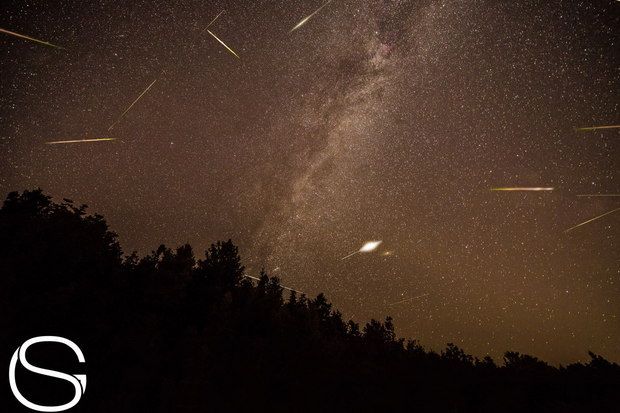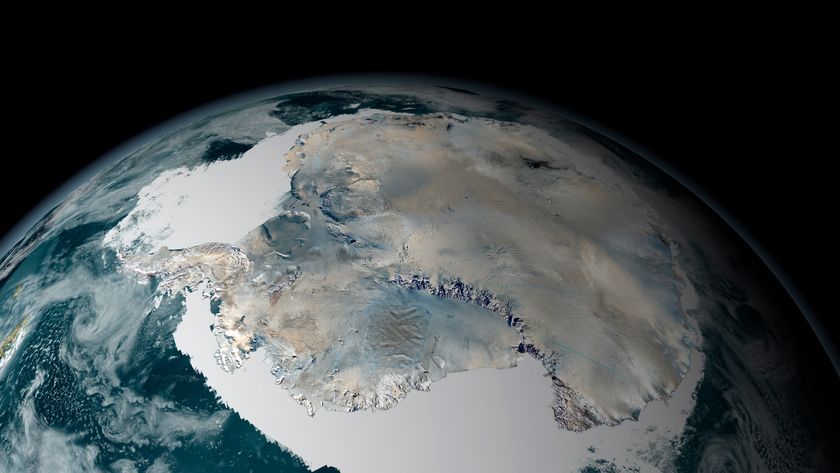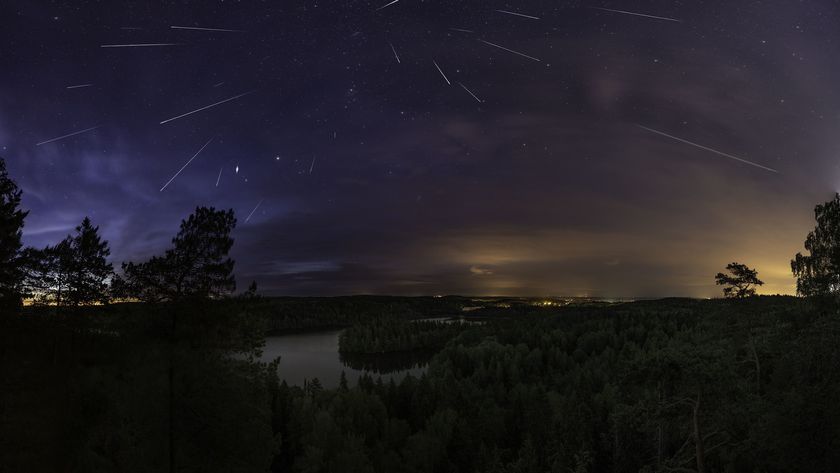
The Meteoric Rise of Life?

Robin Wylie is a doctoral candidate in volcanology at University College London. He contributed this article to SPACE.com's Expert Voices: Op-Ed & Insights.
The silent missiles that flit between the planets have been blamed for some of the largest exterminations that life on Earth has had to endure: However you like your mass extinctions, high on the list of potential triggers is usually a close encounter with a meteorite.
Recently, however, a remarkable discovery has cast these aerial assaults into a surprising new light — because, as well as destroying life, it now seems that ancient collisions might also have helped create it.
In September 2013, a study appeared in the journal Nature Geoscience that set out to test an extraordinary theory regarding life's deep roots. Researchers had previously hypothesized that, through a process known as shock synthesis, the extreme conditions generated by meteorite impacts — specifically ones involving comets — might be able to forge the fundamental chemicals of biology. With the shock as a catalyst, the theory went, the organic (carbon-bearing) molecules present in the ice of comets — such as ammonia and methanol, a simple alcohol — could be transformed into amino acids, the crucial components of proteins, and therefore of life. [Did Comet Impacts Spur Life on Earth? ]
It was a powerful idea, but with a complete lack of experimental evidence, an idea was all it was. To remedy the situation, a team of planetary scientists — led by Zita Martins of Imperial College London — set about re-creating an apocalypse in their lab. By preparing mixtures of ice and organic molecules that mimicked the composition of a comet, and shooting each of them with a high-velocity steel pellet, they managed to replicate in miniature the conditions created when one of those colossal bodies collides with a planet. The researchers then passed the shattered residue from the pellet shots through a mass spectrometer, to measure what new molecules, if any, had been produced by the shock. Amazingly, the paper reports that the impacts generated not just one amino acid, but eight of them.
This experiment, though a simple one on the surface, has returned a result with the potential to radically change our perception of how life might first have arisen. "We have showed experimentally for the first time that amino acids can be produced when a comet impacts a planetary surface," Martins said in a statement. At once destructive and creative, the scaled-down impacts have revealed that the bombardment of the young Earth — already thought to have given us our moon — might also have left behind some of the essential ingredients of life.

But thrillingly, aside from this already ground-breaking insight, another possibility has been raised: the implications of these findings might not be confined to the Earth. Practically every extraterrestrial surface scientists have imaged is covered with the scars of ancient meteor collisions; and if a comet strike could create amino acids on our planet, it could potentially do the same on others. According to Martins and her colleagues, their discoveryalso "increases the chances of life originating and being widespread throughout the solar system."
Sign up for the Live Science daily newsletter now
Get the world’s most fascinating discoveries delivered straight to your inbox.
It's a tantalizing prospect. So tantalizing, in fact, that it has inspired a new voyage to a gas giant. Within the next decade, the European Space Agency's JUpiter Icy Moon Explorer (JUICE) will travel to the Jovian moons, with the goal of evaluating the potential presence of habitable environments — primarily on Ganymede, Europa and Callisto, each of which are believed to contain a subterranean water ocean. The starting chemicals used in the shock synthesis study may be present on the surfaces of these icy satellites. Even with current data, scientists believe ammonia, at least, is present as a "volatile ice" in the crusts of Ganymede and Callisto. [Did Asteroid Impacts Spark Life's 'Left-Handed' Molecules? ]
With the unprecedented resolution JUICE will provide, researchers might, in the not too distant future, be in a position to see whether the countless, unseen collisions with these alien worlds left something more than craters and dust.
The author's most recent Op-Ed was "Volcano Detectives Uncover Monster Ancient Eruption." The views expressed are those of the author and do not necessarily reflect the views of the publisher. This version of the article was originally published on SPACE.com.













